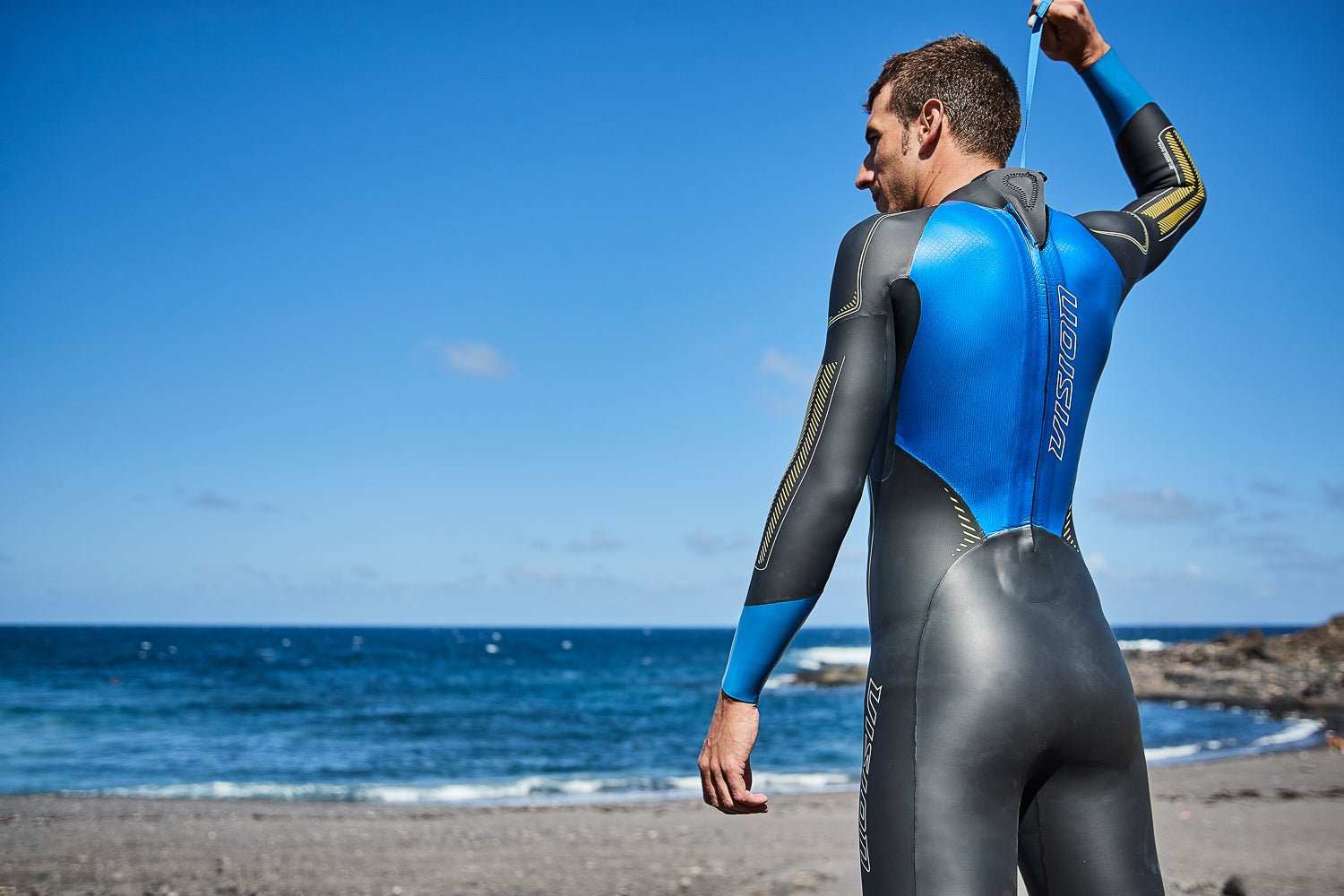In Training und Wettkampf muss euer Neo einiges aushalten: dreckiges Seewasser, Sand, Salzwasser oder Chlor können der Gummihaut ganz schön zusetzen, ebenso einige Scheuercremes (Vorsicht hier vor Paraffinöl) oder Vaseline. Damit der Neo möglichst lange wie eine zweite Haut für euch bleibt, haben wir hier die richtigen Pflegetipps für euch zusammengestellt.
Abspülen, reinigen und trocknen
Besonders aber Salz und Chlor trocknen das empfindliche Material aus und machen es spröde. Der Neo verliert viel schneller seine elastischen Eigenschaften, dass Material wird fester und anfälliger für kleine Risse. Um das zu verhindern und alle schädlichen Rückstände zu entfernen, sollte man den Neoprenanzug nach jedem Einsatz gründlich abspülen - unter der Dusche oder in der Badewanne, innen und außen. So schadet es auch nicht, den Anzug einmal länger in lauwarmen, klarem Wasser einzuweichen und anschließend gründlich auszuspülen.
Dieser Reiniger besteht aus natürlichen und biologisch abbaubaren Inhaltsstoffen und entfernt Schmutz und Gerüche, organische Reststoffe, Sonnencreme und Salzablagerungen schnell für einen sauberen Neoprenanzug mit frischem Duft. Außerdem hält dieser Reiniger das Neopren länger weich und geschmeidig. Ansehen.
Zum Trocknen wird der Anzug auf Links gedreht und an einem gut belüfteten, aber dunklen Ort aufgehängt. Denn das Innengewebe speichert Feuchtigkeit besser, als die wasserabweisend beschichtete Außenhaut.
Erst wenn die Innenseite vollständig getrocknet ist, wird der Anzug deshalb auf Rechts gedreht. So verhindert man, dass das Material zu riechen, oder gar schimmeln beginnt. Ist der Neo vollständig getrocknet, gilt es den Reißverschluss zu schließen, um Schäden durch die Zähnchen zu vermeiden.
Dann kann man die Schwimmhaut noch einmal auf kleinere Risse überprüfen. Denn wer die Fingernägel-Unachtsamkeiten oder Kratzer jetzt flickt, der kann im nächsten Jahr sofort wieder loslegen, ohne böse Überraschungen vor dem ersten Rennen. Wie immer gilt: kleinere Schäden lassen sich leicht mit Neoprenkleber selbst behandeln. Größere Risse vertraut man am besten dem Fachhändler mit etwas mehr Routine an.
Lagerung
Sauber, trocken, auf Rechts gedreht und geschlossen, ist die Schwimmhaut nun bereit für die Lagerung bis zum nächsten Einsatz. Doch Vorsicht: Das richtige Quartier mag wohl gewählt sein, um das Material bestmöglich zu schützen.
1. Position: Hängend, oder liegend schläft der Neoprenanzug am liebsten. Auf jeden Fall jedoch in voller Größe. Nicht gerne wird das Material gefaltet oder gerollt. Denn das gibt nicht nur unschöne Knicke beim Wiederausbreiten – diese Knicke werden später besonders gerne zu Bruchstellen. Auch etwas Freiraum ist dem Anzug wichtig. Gedrückt oder Gequetscht zuunterst eines großen Material-Stapels, wird unter Umständen das aufgeschäumte Material beschädigt – Luftbläschen und Druck – keine gute Idee!
2. Raum: Dunkel sollte der Lagerplatz auf jeden Fall sein. Denn UV-Strahlung setzt dem Neopren böse zu und macht es trocken und rissig. Doch auch hier ist der Anzug wählerisch. Sowohl die Garage, der Schuppen, oder der Heizungskeller sind keine gute Wahl. In Umgebungen, wo sich lösungsmittelhaltige Substanzen befinden, die Dämpfe freigeben können (Keller/Materialschuppen/Abstellkammer usw.), oder in der Garage, wo sich Autoabgase ansammeln können, besteht Gefahr für das empfindliche Material.
3. Kleiderbügel: Wer sich dafür entscheidet, den Schwimmanzug hängend im Schrank aufzubewahren, der sollte die Gummihaut am besten auf einen speziellen Neopren-Bügel hängen. Der hat eine extra breite Auflagefläche und verteilt das Gewicht des Anzuges auf die gesamte Schulterpartie. Außerdem können so in der Schulterpartie keine Knicke entstehen. Wer keinen solchen Bügel hat, der kann beispielsweise zwei Stücke handelsübliche Rohrisolierungen um einen herkömmlichen Kleiderbügel wickeln und erreicht denselben Effekt: möglichst wenig punktuelle Belastung auf dem Material.




















